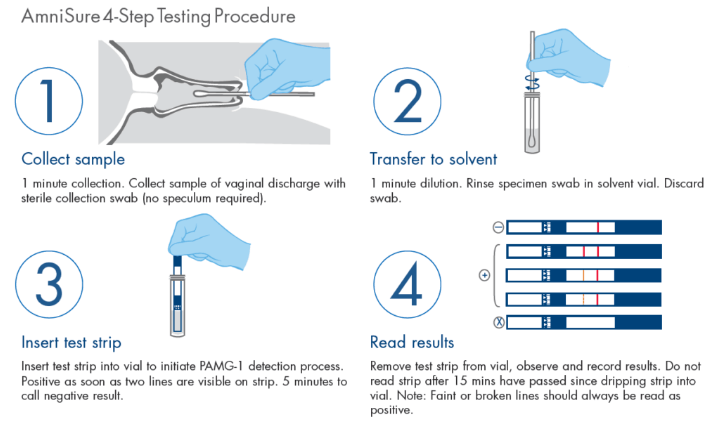Causes and risk factors
Causes and risk factors ( 5 Questions)
A nurse is assessing a client who is at 34 weeks of gestation and reports a sudden gush of fluid from the vagina.
The nurse suspects that the client has PPROM.
Which of the following tests should the nurse perform to confirm the diagnosis?
the Nitrazine test is a pH test that detects alkaline amniotic fluid in vaginal secretions. However, it can be falsely positive due to blood, semen, urine, or bacterial vaginosis.
the Fern test is a microscopic examination of vaginal fluid that detects a fern-like pattern of crystallized sodium chloride from amniotic fluid. However, it can be falsely positive due to cervical mucus or semen.
the Kleihauer-Betke test is a blood test that detects fetal red blood cells in maternal circulation. It is used to determine the amount of Rh immunoglobulin needed for Rh-negative mothers, but it does not confirm fetal membrane rupture.
This is a rapid immunoassay test that detects placental alpha microglobulin-1 (PAMG-1) in vaginal fluid, which is a marker of fetal membrane rupture. It has high sensitivity and specificity and can be used in the presence of blood or other contaminants.
This is a rapid immunoassay test that detects placental alpha microglobulin-1 (PAMG-1) in vaginal fluid, which is a marker of fetal membrane rupture. It has high sensitivity and specificity and can be used in the presence of blood or other contaminants.

